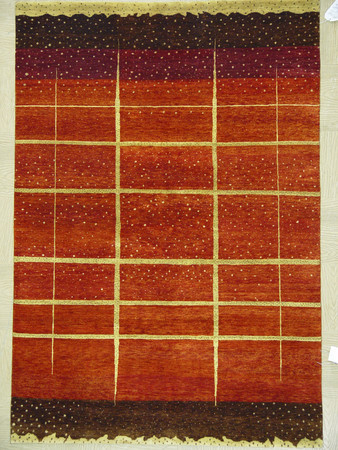What’s underfoot?

Like so many things in life, when it comes to purchasing a new handwoven rug for your home having a little education goes a long way.
“The first thing you need to do is become an educated consumer. Read up on the product before you go to buy it,” said Lucille Laufer, executive director of the nonprofit Oriental Rug Importers Association.
Laufer said the technical definition of an Oriental rug is one that has been handwoven. It can be distinguished from a machine-made rug by the intricacy of its design and overall beauty, she said.
“You can use a handwoven rug in any room of the house, from the kitchen to the bathroom and from the living room to the dining room.”
The rugs can be woven in a variety of styles, from traditional to contemporary, and in materials such as cotton, wool and silk. They can be hand knotted, hand tufted or flat woven, depending on the style and pattern.
Detailed information about the different types of Oriental rugs can be found in a new shopper’s guide sponsored by India’s nonprofit Carpet Export Promotion Council in cooperation with the U.S.-based nonprofit Oriental Rug Importers Association.
Michael Harounian, president of the association, said consumers can tell the different between hand-knotted and hand-tufted rugs by looking at the back sides. Hand-knotted rugs will have no backing and you will be able to see the patterns clearly. Hand-tufted rugs usually have a canvas backing, he said.
“Also, look at the fringes. If they are woven straight through, then it is not handwoven. If it has been hand knotted, no two knots will be exactly the same.”
Laufer said the artisans who make the rugs have learned the age-old craft from relatives, handing down secrets and techniques from generation to generation.
When it comes time to shop for an Oriental rug, both Harounian and Laufer said it is best to find a reputable dealer, one that has been recommend by a trusted relative or friend, if possible.
But, a little detective work can help even uneducated consumers determine a rug’s quality, Harounian said.
“Look at the straightness of the carpet, if it sits flat on the floor and there are not a lot of ripples on the edges. Also look for the definition of color and definition of design. Make sure the colors are not bleeding. You really don’t have to be an expert. If it catches your eyes, it’s definitely not a good quality.”
Harounian said consumers also should make sure their rugs are not crooked, check for missing fringes, look for pile height that is inconsistent and variations in the dyes used from one flower to the next.
He also said to be sure to ask about the knot count per square inch. Anything above 100 knots per square inch is considered average quality, while anything with 200 and above is considered top quality.
An average starting price for a 6-by-9-foot Oriental rug is about $500. Depending on the intricacy of the design and material used, the price can be several thousand dollars.
Laufer said a good-quality rug will last for generations.
“An Oriental rug is the easiest thing in the world to take care of. You put it on the floor, vacuum it and once a year turn it around. That’s all you need to do,” she said.
The Oriental Rug Importers Association offers additional information on its Web site, www.rugsofindia.in. The shopper’s guide and Web site are part of a new nationwide educational and marketing campaign to heighten awareness of handwoven rugs from India.